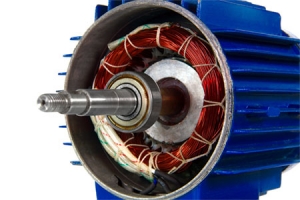
Cool Technologies, Inc. (OTCQB: WARM) was founded in February 2011 to commercialize a single patent: a composite heat pipe – a game changing solution to a universal problem.
Heat affects anything that moves or generates power. Heat degrades, warps or causes devices to fail outright.
The solution is to cool or remove the heat. Cooling lengthens product life and increases power. Get a motor to run cooler and it’ll generate more power. Cooling increases efficiency. More power with no increase in size is more energy efficient. Cooling reduces costs. Generate the same output from a smaller size and fewer raw materials are needed. The fewer raw materials needed, the less cost to manufacture. Combine that with increased product life and it reduces the cost to consumers. Finally, almost half of all electricity produced worldwide is consumed by motors and generators, so improving their efficiency saves energy. In other words, cooling is green.
The problem is removing heat adds cost and complexity to the end product.
Addressing A Problem
Heat pipes effectively remove heat without using pumps or moving parts. They’re passive and maintenance-free which is a key benefit because reliability is a critical issue. As a result, they’re far less expensive than mechanical cooling systems and devices.
Cool Technologies’ heat pipes surpass traditional heat pipes because they are the closest thing to super conductors. They offer virtually no resistance to thermal energy. The heat pipes quickly transfer heat in any direction, even against the pull of gravity and they’re effective in any shape or length. Because they’re sealed, they can be shaped to fit any design or mold including engine blocks. That eliminates the need for manufacturer retooling or redesign and minimizes capital investment.
An independent test demonstrated that Cool Technologies increased motor efficiency by 1 to 2 points and improved electric motor performance by 20-40%. That means a motor enhanced with our technology can deliver more power than other motor of its size and design on the market.
Any kind of electric motor: pump, compressor, generator; any kind of engine: gas, diesel, boat, jet can benefit.
Expanding the Applications
After starting with one patent, the company kept finding new applications and adding patents to its portfolio: submersible motors, hermetic motors and more.
In the meantime, Cool Technologies signed agreements with multinational manufacturers to test the technology in their respective product lines. One has completed a computer simulation, others are choosing products to prototype. But the company hasn’t stopped there.
Heat is a major cause of brake failure. Why not add the technology to brakes, rotors and calipers? Another inspiration, another patent-pending and an agreement signed with a racing team to test the technology in a Porsche GT3 Club Championship car. Another patent pending to cover applications for bearings soon followed as well.

Combining the Technologies
An engineer had a brainstorm to combine technologies. His father had pioneered the use of electric vehicles in underground mining and as forklifts in the 1950’s. Why not take proven electric vehicle technology, match it with an electric motor that’s enhanced with thermal technology, add it to an internal combustion vehicle and enable the vehicle to run using whichever is most efficient for the driving conditions? It’ll reduce the load on the internal combustion engine which reduces fuel consumption and maintenance costs, lowers emissions and lengthens engine life. Add rechargeable batteries and it could turn any vehicle into a plug-in hybrid with what the company now refers to as ‘electric load assist’.
And so, another patent-pending and a new conversion targeting fleet and commercial markets facing stricter emissions regulations and increased fuel and other variable costs.
Another engineer realized that our patent-pending parallel power platform, which already forms the basis of our electric load assist, could also power an on-board generator.
Suddenly, the Ultimate Work Truck was born. Existing vehicles can be converted and provide up to 300kVA of auxiliary electric power (enough to power 40 typical US homes for 8 hours). No longer will companies have to tow generators to the work site nor idle the engine to operate bucket truck arms. Military units can set-up and power mobile bases with a single vehicle.
Sandy hits the East Coast. Businesses lose power. Stores are closed. Perishables spoil. We realize that our patent-pending gearing system could power an on-board generator solely from the vehicle’s internal combustion engine. Customers could enjoy the mobile auxiliary power benefits of the UWT without the need for hybrid conversion. One company expresses immediate interest and starts laying the groundwork for a deal.
The Cool Tech Business Model
Cool Technologies, Inc. is not a manufacturing company. Every time the company finalizes a platform with a customer, the company will derive revenue in the form of a license and royalty. Or, in the case, of the case of the UWT and the mobile auxiliary power unit, we have set up a group of outsourced vendors and testing facilities that will enable the company to create products under our brand name and derive revenues as well.
Our mission is to find new applications for our patents and commercialize them. Since April 2011, the company has been awarded 7 patents and has another 7 patents pending.
In the meantime, the engineers are already thinking how they can use the technology to cool vehicle components, turbines, turbo chargers, automatic weapons…
